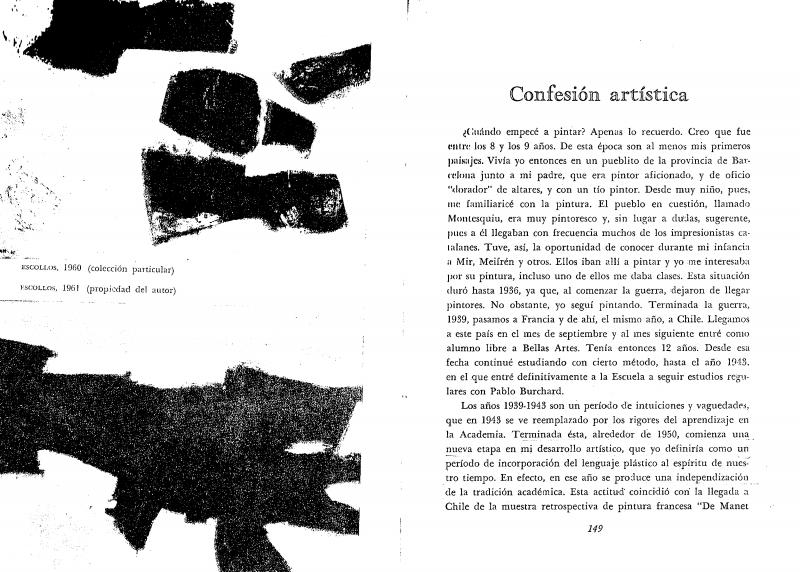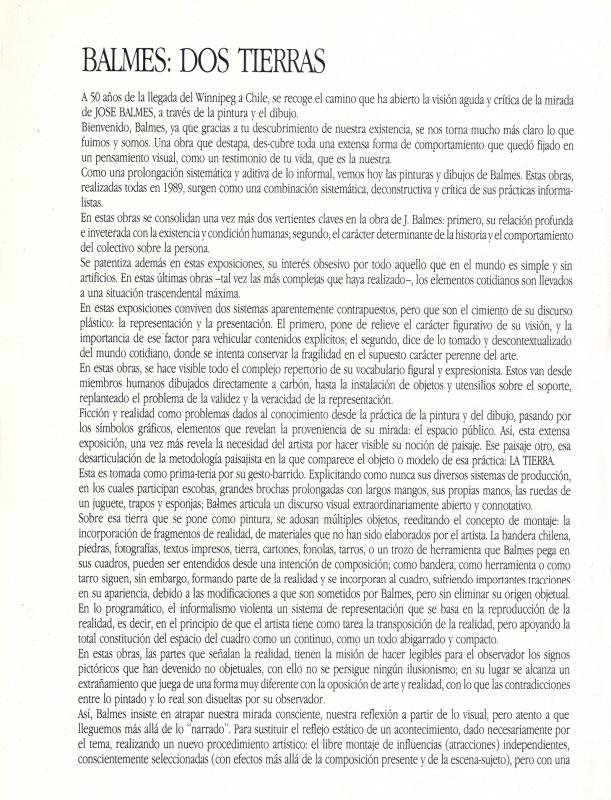The critic and curator Justo Pastor Mellado (b. 1949) wrote this essay for the catalogue for an exhibition of works by the Catalonian born painter José Balmes (1927–2016) titled Balmes. Tiempo presente. The exhibition, which was presented at the Centro Cultural Borges in Buenos Aires (1996), included paintings from the 30-year period spanning the mid-1960s to the mid-1990s.
José Balmes came to Chile with his parents, as refugees from the Spanish Civil War, on the Winnipeg, a ship chartered by President Pedro Aguirre Cerda. He enrolled in the Facultad de Artes de la Universidad de Chile in 1944, where he took classes from the painters Camilo Mori (1896–1973) and Pablo Burchard (1875–1964). After completing his studies, he got a job as a teacher at the Escuela de Bellas Artes, where he was also director of the Visual Arts Program and dean of the Arts department, a position he lost as a result of the military coup d’état in 1973. He went into exile (for the second time) because of his membership in the Communist Party and his involvement with the Unidad Popular administration of President Salvador Allende (1908–1973). [Concerning his time as a teacher, see: “El maestro de los jóvenes” (doc. no. 751500) by Patricio de la O, in the ICAA Digital Archive.]
Balmes and the artists Eduardo Martínez Bonati (b. 1930), Alberto Pérez (1926–1999), and the painter Gracia Barrios (1927–2020), his wife, started the Grupo Signo, a group that responded critically to the painting tradition as part of the political turmoil of the 1960s. [For more information about the group, see the following text by one of its members: “Presencia del Signo” (doc. 751514) by Alberto Pérez.]
In 1965 Balmes wrote the essay “Confesión artística” (doc. no. 748623), in which he discussed his early thoughts on painting, which he subsequently reinforced. On a formal level, his painting teemed with gestures and daubs. The essay refers to Santo Domingo (1964–65), his series about the United States’ armed intervention in Santo Domingo, in the Dominican Republic. Mellado explained in his essay that this series became a key work for understanding the relationship between artists and society in Chile. Along those lines, addressing the socio-historic situation in what he called Testimonio, Balmes produced a series of large-scale paintings: Vietnam (1966–68), Ché Guevara (1968–69), and No al Facismo (1971–73). While living in exile in Paris, he continued to flaunt his pictorial-political resistance in his paintings. During that period, he produced Represión (1974–76) and the paintings Lonquén (1979) and Homenaje de André Jarlan (1987), among others. [For more information about his work, see: “Balmes: dos tierras” (doc. no. 735080) by Gaspar Galaz.]



